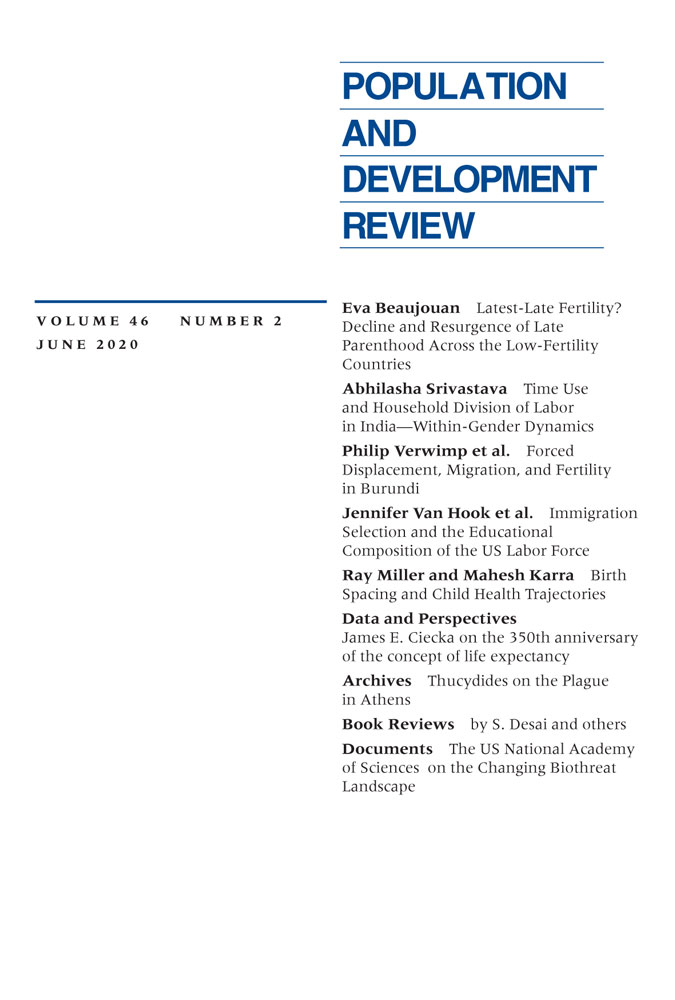Forced Displacement, Migration, and Fertility in Burundi
Philip Verwimp is at the European Center for Advanced Research in Economics and Statistics, Université Libre de Bruxelles, Belgium. Email: philip.verwimp@ulb.ac.be. Davide Osti is an Independent Researcher, Bologna, Italy. Email: devidosti@gmail.com and Gudrun Østby is at the Peace Research Institute Oslo (PRIO), Norway.
We thank the audience at the PRIO Workshop "Armed conflict, maternal and child health, and the impact of development aid in sub-Saharan Africa" in Oslo in September 2016, Eliana La Ferrara, Bram de Rock, and the participants of the Quetelet Conference held at the Université Catholique de Louvain in December 2017. The comments of the referees and the editor allowed us to improve the manuscript substantially. We also thank Gee Berry for language editing. Funding for this work was provided by the Research Council of Norway (grant 193754). All errors remain the responsibility of the authors only.
Abstract
The civil war in Burundi (1993–2005) led to the forced displacement of a large part of the population. This study aims to explore how that displacement affected fertility behavior. Using a nationally representative, retrospective survey on birth and residential histories of 4,523 Burundian women, we examine the impact of conflict-induced displacement on fertility. These unique data enable us to distinguish between remaining-in-place, voluntary migration, and forced displacement, as well as to distinguish between periods spent “on the move” versus periods spent in residence in the new site. Adopting a semiparametric regression model, we analyze both the probability of the first pregnancy and the subsequent spacing of higher order pregnancies. We find that the risk of a first pregnancy was higher in the year in which a woman was forcibly displaced and lower in the year a woman migrated voluntarily. Residency in a new site increased the risk of pregnancy for both.




